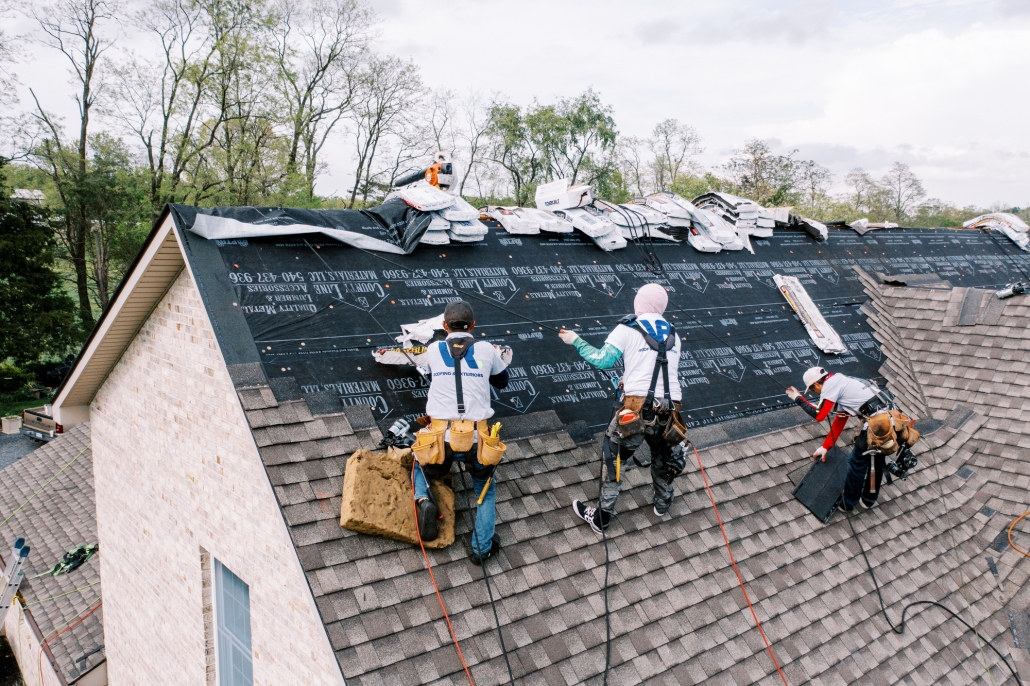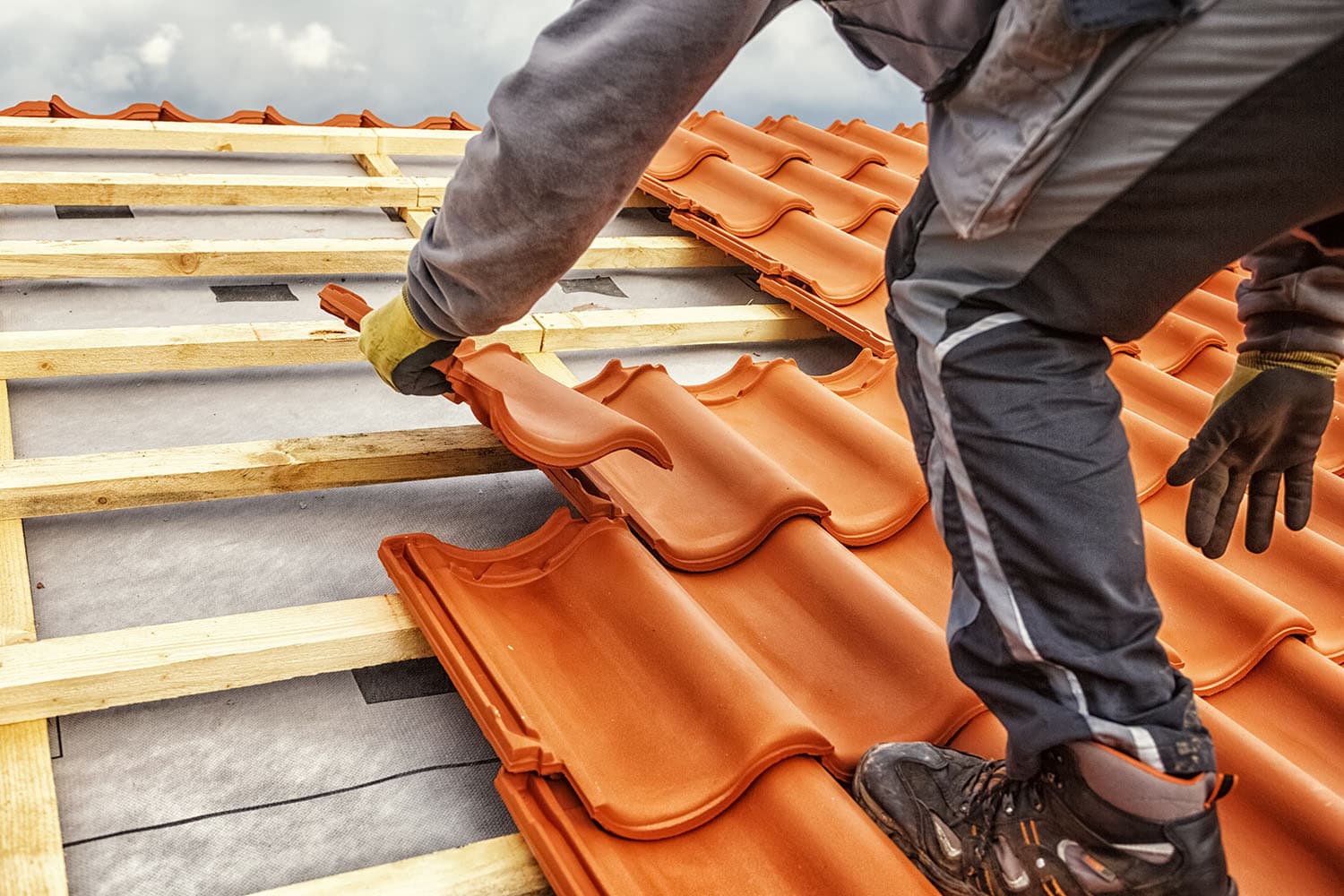The Ultimate Checklist for Roofing System Install: Making Sure Top Quality and Durability
The procedure of mounting a roofing needs cautious attention to information. A detailed list can help assure high quality and sturdiness throughout the project. From reviewing the existing roofing system problem to choosing the appropriate products, each action is necessary. Appropriate preparation and tools play a vital duty in achieving an effective setup. Numerous overlook the value of last evaluations and ongoing upkeep. Comprehending these elements can greatly affect the longevity of a brand-new roofing.
Evaluating Your Existing Roofing Condition
Just how can one successfully identify the problem of their current roofing? An extensive inspection is crucial for assessing a roof covering's honesty. Property owners need to begin by checking out the roofing system from the ground, seeking noticeable indicators of wear such as missing out on roof shingles, drooping locations, or staining. Closer examination can be done by accessing the roofing itself, where one ought to examine for cracked or curled shingles and examine flashing around vents and chimneys.Additionally, the interior of the home warrants interest; water discolorations or mold growth on ceilings and walls may indicate leaks. Attic assessments can expose prospective problems, such as insufficient air flow or signs of moisture.Regular examinations, preferably twice a year, can help identify issues early and prevent costly repair work. By recognizing the roof covering's current state, house owners can make educated choices around essential maintenance or replacements.
Choosing the Right Roof Materials
When selecting roofing products, what variables should homeowners consider to assure a sturdy and reliable choice? First, the environment plays a considerable function; products ought to endure regional climate condition, whether it's hefty rain, snow, or intense sun. Next off, the long life of the material is vital; choices like metal or slate deal expanded life-spans contrasted to asphalt tiles. House owners must also evaluate the material's weight, as this can affect the architectural stability of the home. Furthermore, appearances matter; the selected material should enhance the overall building design. Energy performance is another consideration; some products reflect warm, minimizing cooling costs. Budget plan constraints will certainly dictate options; while some products may have a reduced in advance price, long-term durability can lead to higher financial savings. By evaluating these variables, property owners can make enlightened decisions that enhance their roof covering's high quality and long life.
Preparing for Installment
Prior to the setup procedure starts, property owners have to guarantee that their building is effectively prepared to fit the brand-new roofing system. This preparation involves a number of key steps to assure a smooth and reliable setup. Initially, house owners need to get rid of the location around your home of any type of particles, tools, or furniture that could prevent gain access to for service providers. Additionally, it is very important to inform neighbors regarding the approaching work to reduce interruption and protected cooperation.Next, house owners need to inspect their existing roof covering and architectural parts, addressing any potential concerns such as rotting wood or leaks that could influence the installment. Safeguarding needed permits and sticking to neighborhood building codes is crucial for conformity and security. Scheduling the installment throughout favorable climate problems aids avoid delays and warranties that the work profits without issues. Proper prep work sets the foundation for a successful roofing task, eventually boosting the longevity and performance of the new roof covering.

Important Devices and Tools
In roof installation, having the right tools and equipment is vital for an effective job. This includes necessary safety and security equipment, different roofing installation devices, and reliable product managing devices. Proper preparation and option of these things can substantially boost effectiveness and safety at work website.
Safety Gear Necessities
Safety equipment is a necessary component of any type of roofing system setup task, making sure the wellness of employees at elevated heights. Important safety and security devices includes construction hats, which shield versus dropping debris, and security goggles to shield the eyes from dust and bits. Non-slip shoes is significant for keeping hold on steep surfaces, while harnesses and lanyards supply fall protection, preventing serious injuries. Gloves help safeguard hands from sharp materials and lower tiredness during expanded periods of job. Furthermore, high-visibility vests enhance exposure, promoting recognition among staff member and close-by workers. Using ear security might also be recommended in noisy atmospheres. Overall, sticking to safety gear demands is essential for a secure and effective roof installment process.

Roofing Installation Tools
Proper safety steps lay the groundwork for a successful roof covering task, yet having the right devices and devices is similarly important. Vital tools for roof installation include a ladder, allowing secure accessibility to the roofing, and a roof covering nail gun to guarantee efficient and secure attachment of products. A chalk line is crucial for marking straight lines, while an utility blade is essential for reducing roof materials accurately. In addition, a pry bar aids in removing old tiles. Workers should additionally have a level to verify proper positioning and water drainage. Lastly, a great pair of job handwear covers safeguards hands while providing grasp. With each other, these tools help with a smooth roof covering process, enhancing both top quality and longevity.
Material Handling Equipment

A variety of product handling equipment is important for an efficient roof installation process. Devices click here such as forklifts, raises, and dollies facilitate the movement of heavy products like shingles and underlayment to the task site and onto the roof covering. Using scaffolding and ladders warranties secure access to raised locations while reducing the threat of injury. Tarps and bins are necessary for appropriate storage and company of products, avoiding damage and guaranteeing very easy retrieval. Furthermore, a crane might be needed for bigger roof covering tasks to raise significant materials straight onto the roofing. Correct training in using this equipment is essential; it boosts operations efficiency and adds to general task safety, guaranteeing a successful roof setup.
Step-by-Step Installment Refine
The detailed setup procedure is necessary for an effective roof covering installation. It begins with preparing the roof surface, complied with by the correct installment of underlayment, and ends with the effective securing of roofing products. Each of these actions plays a vital function in making sure the longevity and functionality of the roofing.
Prepare the Roofing System Surface
Preparing the roofing system surface is necessary for guaranteeing a successful installation of roofing products. This procedure begins with an extensive evaluation to identify any kind of existing damage or debris. Any loosened tiles, extending nails, or old roofing products have to be gotten rid of to produce a clean, smooth structure. Next off, the roofing deck ought to be looked for rot or architectural problems, as these can compromise the honesty of the new roof covering. After repair services, an extensive cleaning is essential; this includes sweeping away dust, leaves, and any type of various other pollutants that could impede bond. Guaranteeing appropriate water drainage and ventilation is essential, as these aspects affect the durability of the roof covering. A well-prepared surface area sets the stage for ideal setup and resilience.
Mount Underlayment Properly
Mounting underlayment appropriately is essential for improving the total performance of the roof. The process begins with choosing the ideal underlayment material, which can include really felt, artificial, or rubberized options. Next, confirm the roof surface is clean and completely dry prior to laying the underlayment - honolulu roofing materials. Begin at the least expensive point of the roofing, rolling out the underlayment horizontally and overlapping each row by at the very least 6 inches. It is crucial to secure the underlayment in location with staples or roofing nails, preventing voids or creases that might jeopardize water resistance. Lastly, trim excess product at the sides, assuring a cool finish. This meticulous setup step is critical for providing an added layer of protection against dampness and boosting resilience
Protect Roof Products Properly
After validating the underlayment is effectively mounted, the following step involves securing the roof covering products successfully. The roof covering contractor need to collect all required products, consisting of shingles, nails, and blinking. Beginning at the most affordable point of the roof, tiles must be laid in a staggered pattern, validating appropriate overlap to avoid leakages. Each shingle should be fastened with nails, making use of the maker's recommended spacing and amount. It is vital to drive nails straight, staying clear of over-penetration, which can jeopardize the material. Flashing should be mounted around chimneys and vents to boost waterproofing. The contractor must carry out a detailed inspection to validate all products are firmly attached, as this will greatly influence the roofing system's general resilience and durability.
Carrying Out Last Inspections
Comprehensive last examinations are important to ensure that a recently installed roof covering fulfills all safety and high quality criteria. This critical step includes examining the whole roofing system for any prospective concerns that might arise post-installation. Inspectors ought to examine the alignment of shingles, making sure they are correctly secured and devoid of flaws. Flashing and ventilation systems need to additionally be reviewed for correct installation and functionality.Additionally, the inspector needs to check gutters and downspouts to validate they are suitably positioned to facilitate water drainage. Any kind of indicators of leakages, misaligned materials, or inadequate sealing around infiltrations need to be resolved instantly. Roofing contractors ought to also ensure that all debris from the installation procedure is eliminated, leaving the site clean and secure. Carrying out these detailed evaluations helps protect against future problems, ultimately expanding the life expectancy of the roof covering and providing homeowners with comfort regarding their investment.
Preserving Your New Roof Covering
Appropriate upkeep is crucial for guaranteeing the durability and efficiency of a new roof. House owners should carry out normal evaluations at least twice a year, ideally in springtime and autumn, to identify potential concerns early. Throughout these assessments, they should try to find indicators of damages, such as missing shingles, leaks, or debris build-up, which can restrain drainage and promote mold growth.Cleaning rain gutters and downspouts is crucial, as clogged systems can result in water damage and architectural concerns. Additionally, trimming overhanging branches can prevent abrasion and particles accumulation on the roofing surface.It's also suggested to arrange professional assessments every few years to examine the roof's problem extensively. Keeping records of maintenance activities and fixings can help track the roofing's efficiency with time (roofing contractors honolulu). By sticking to a constant maintenance routine, homeowners can protect their investment and guarantee their brand-new roof covering continues to be reliable for many years to find
Frequently Asked Questions
How Lengthy Does a Common Roofing System Installation Take?
The period of a regular roofing installation differs based on variables such as roofing size, materials, and climate condition. Usually, it can take anywhere from eventually to several weeks to finish the setup.
Can I Install a New Roofing Over an Existing One?
The inquiry of setting up a new roof covering over an existing one usually emerges. Lots of property owners consider this option for cost-effectiveness, but it is necessary to assess neighborhood building regulations and the architectural integrity of the existing roofing.
What Permits Are Needed for Roof Setup?
Prior to setting up a roof, one need to check regional regulations. Normally, building authorizations are needed, in addition to assessments to guarantee conformity with safety criteria and zoning legislations. Consulting with neighborhood authorities is vital for correct assistance.
What Guarantees Are Readily Available for Roof Products?
Various guarantees exist for roof products, generally including supplier warranties covering flaws and efficiency. In addition, some professionals use handiwork warranties, guaranteeing setup top quality. Customers should thoroughly review terms to understand protection period and constraints.
Just How Can Climate Influence the Installation Refine?
Weather significantly affects the installation process, as rain, snow, or extreme temperatures can delay work, affect material bond, and concession security. Correct preparation and organizing around weather forecasts are necessary for effective roofing setup.
Comments on “Why a Local roofing company honolulu Offers the Best Service for Island Homes”